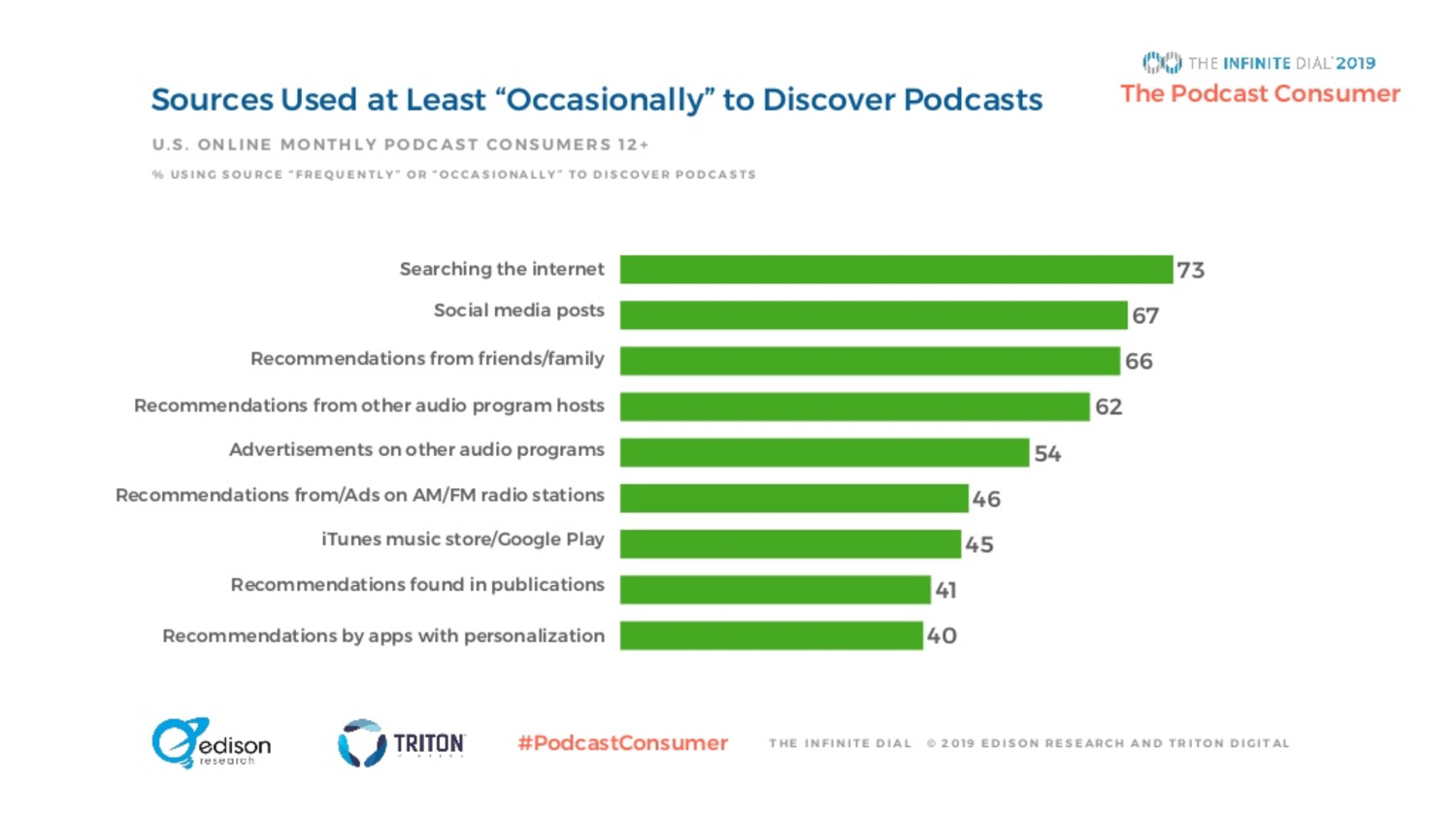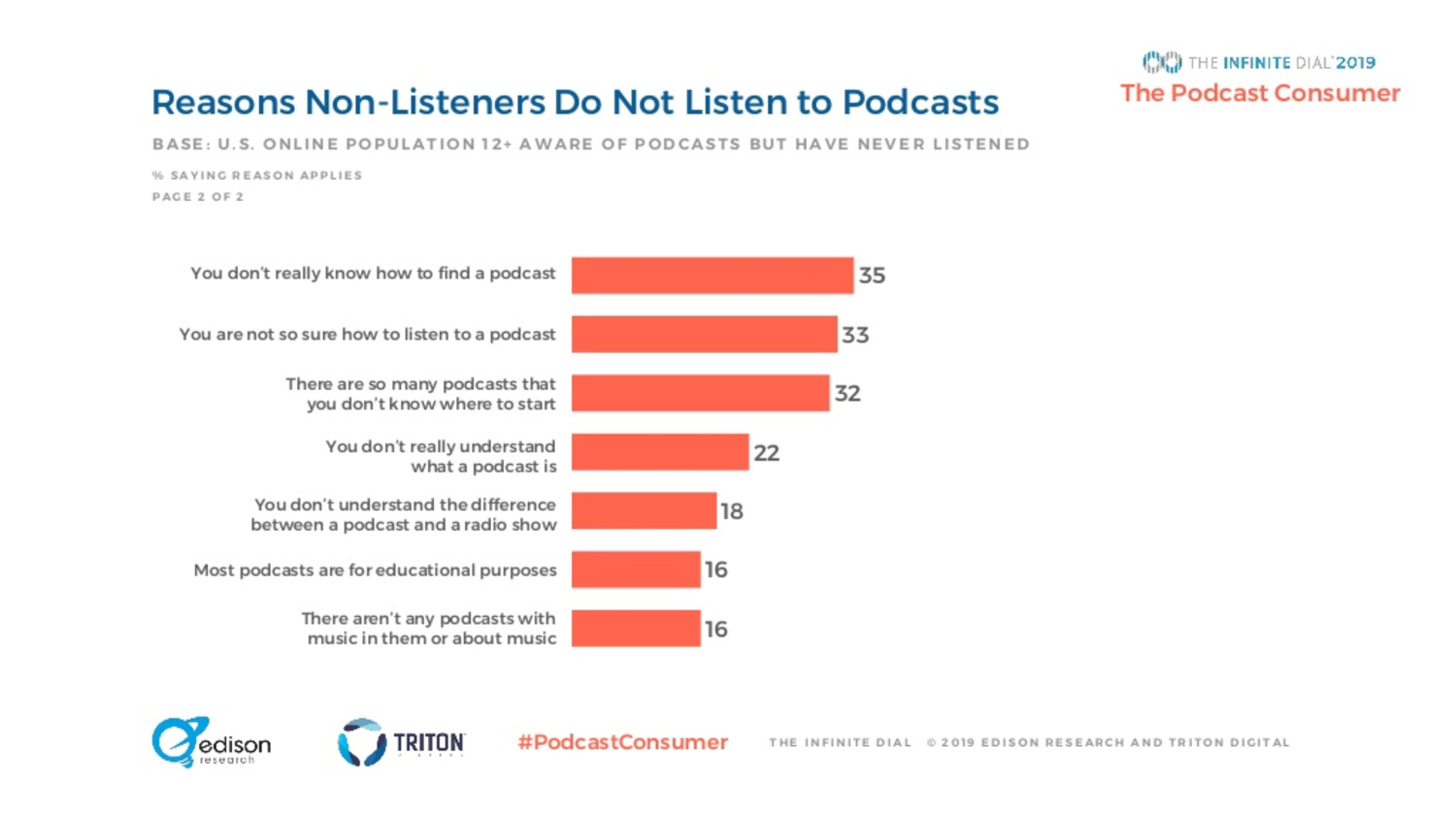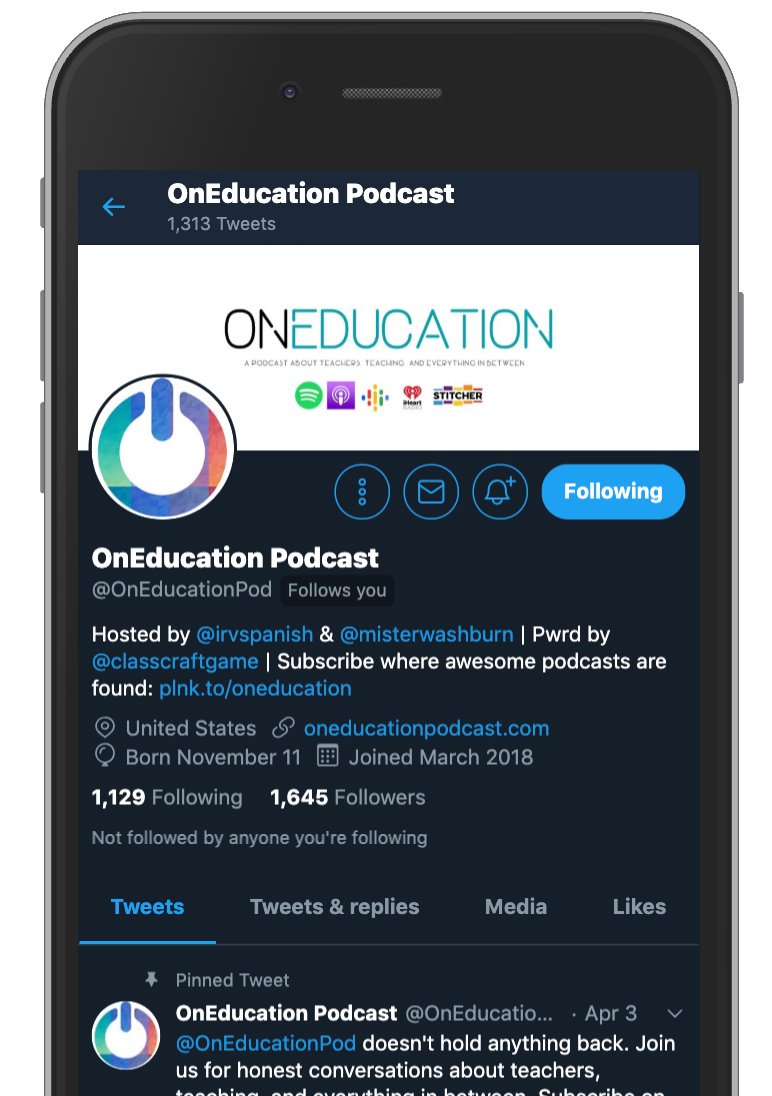The State of Podcast Discovery on Social Media
Recent podcast consumer reports present us creators with data and insights into where podcasts are (and aren’t) being discovered, how audio is (and isn’t) being consumed, alongside other relevant information to help market podcasts.
Currently, there is not a lot of consistency in how podcasts are shared on social platforms. Creators post new episode updates in a variety of ways, from dropping multiple links for each podcast app in text-based posts to audiograms with visual waveform clips, and beyond.
Podcasts are being discovered on social so it’s a platform that shouldn’t go over-looked.
Findings from The Canadian Podcast Listener let creators know that the second most-popular ways listeners discover new podcasts are through social media (42% of the report’s group). And data from the latest Edison Research’s 2019 Podcast Consumer report? See image below.

There’s no question that sharing podcasts on social has traditionally been a time-intensive task for podcast marketers.
Time is spent creating/editing/resizing image assets, specific to each social platform (potentially on top of creating video clips, as well). And creators promoting their show and new episodes are spending time link-collecting for listening platforms, then sharing multiple podcast app links for their audience to choose from.
Having done this for multiple shows myself, want to know my honest take? Podcast social sharing is a pain in the ass.
Overcast, a popular podcast iOS app, recently introduced a video clip sharing feature for podcasts. From inside the Overcast app, users can export/share video clips of podcast episode’s audio at specific timestamps - OvercastFM video clip sharing announcement. This is a wonderful feature and the adoption within the industry by podcasters and friends of the pod, alike, has been amazing.
For video-based (or audio-only export option) social posts this is a win, a large step forward for podcast sharing. What about text-based (or image-based) social posts, though? Posts with a wall of links to shows in each listening app?
Timothy Buck, host of the UNCO (FM) podcast writes this in his article-in-response to Overcast clip sharing (keep in mind that Overcast is an iOS app and video clips point to iOS listening options):
“As a podcast creator with 80% of my traffic coming from Overcast and Apple Podcasts, this is a hugely welcome change. This doesn’t solve the link sharing problem entirely, especially for shows who have large Android listenerships, but it will reduce the need for me to tweet 3 different links of the same episode.”
As creators, we need be sharing for our show’s audience - sharing links that everyone can open. Sending Android users to Android podcast apps, iOS users to iPhone podcast apps, desktop to landing pages, and so on. As well as always remembering that even though I may own an iPhone, not all of my listeners will.
Post one podcast smart link in-place of multiple app links
If you’re already giving your audience multiple options, thank you and continuing to do so is much more accessible than only linking to Apple Podcasts. Introducing Plink smart links into your workflow and podcast marketing, though, will save you time and solves pain-points that we as content creators have.
Skip the link-collecting on your next text-based social post and gain more time for actually podcasting.
Every podcast already has Plink smart links and Show Pages with podcast app links to your show in Apple and Google Podcasts, Spotify, Overcast, Breaker, and more. Search for any podcast’s smart link.
Plink smart links have a smart landing page, too
At it's core, Plink podcast smart links will detect devices and route accordingly:
- iOS users auto-open Apple Podcasts app
- Android users auto-open Google Podcasts app
- desktop users land on the podcast's Show Page with other app links
Hover mouse over Show Page + scroll to see app link options.
View Crime Junkie's Show Page
To always display a Show Page, ignoring device-detection and redirection smart linking, you can add ?to=page to the end of Plink links - this sends users to the landing page first, no matter the device. Other features and URL parameter options.
Sharing these Show Pages on social provides a more accessible experience for everyone, giving them options as to what podcast listening app they’ll listen to your show in. The Page’s links are specific to your show and Plink intentionally keeps podcasting open and platform-agnostic by providing routes to as many podcast listening apps as we can.
Change your show’s image? Plinks on it, your page is programmatically kept up-to-date, instantly!
Oh yeah, Plink smart links are free to use.
You Can Increase Podcast Discoverability for the Entire Ecosystem
Just how much progress has the podcasting ecosystem made, in regards to non-listeners knowing how to access audio content? Comparing Edison’s Podcast Consumer reports from 2018 and 2019 give us this answer. Tom Webster from Edison Research shared this number and insight in mid-2018:
“48% of people who don’t listen to podcasts say it’s because they’re ‘Not sure how to listen to a podcast.’“

2019’s number? Referenced in image above - between 33 and 35%.
Items one and two on the visualization above are quite similar. So, from 48% to 35% in one year’s time - this is definite progress. Yet ensuring the podcasting ecosystem remains understandable both to those currently in and those yet to discover it, is in our hands. We as creators, sharing our shows and audio to this audio medium can rid of even more non-listener friction. You can directly impact podcast discoverability and adoption.
Smart linking everyone, especially current non-listeners who do not yet have a podcast app preference, will automatically direct them into pre-installed, native applications on their mobile devices.
Adversely, if a non-listener on an Android mobile phone discovers a podcast’s website and/or social profile that is solely linking to Apple Podcasts or another app they do not have/cannot download on their device, this medium may seem non-accessible to them.
How you link to your show from your platforms directly impacts discoverability and accessibility for the entire ecosystem and medium. It’s our duty as messengers of the medium to use best-practices towards accessible podcast listening options.
Is it time to update your social profile’s bio or website links?
Let’s offer everyone better user experiences, no matter the device, operating system, or geographical location.
Shows are being discovered on social. But are we sending fans to the right place?
A few examples of podcasts sharing Plink smart links on Twitter and Facebook:
New episode, ready for takeoff 🛫
— Hack or Slash (@HackorSlash) May 3, 2019
Join us for Episode 041: Final Destination (2000): https://t.co/GtmpuHNv1v
This week’s episode was guest edited by @hackorslashpj #horror #HorrorMovies #MovieReview #podcasts pic.twitter.com/A0ddmIKZMM

And an example of linking directly to a podcast smart link from social profile's bio, using actionable CTA "Subscribe where awesome podcasts are found" - OnEducation podcast's plnk.to Show Page.
Is it time for you to re-prioritize how you link to your show? Think about other devices, other’s app preferences.
Where will listeners be consuming your content? Android? Laptops? Smart Watches?
Creators are making this ecosystem more accessible by promoting their podcasts with one, smart link.
